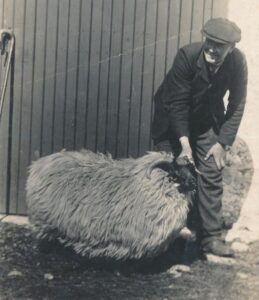 Livestock in rural communities in 19th-century Iceland played a significant role in life in general. Farming was the main occupation: the raising of livestock, sheep and cows. A wealthy farmer often divided his land into smaller farmlands and leased them out. Livestock was often included in the lease, a cow or two and several sheep. Cows were leased with the farm and were the property of the landowner. Cows could not be moved from one farm to another without the landowner’s permission. Leased sheep, on the other hand, could be returned by the leaseholder at any time for whatever reasons. Sheep owners would not lease out their animals unless the leaseholder, whoever he might be, farmer or live-in worker, could guarantee his ability to secure enough feed for the animals.
Livestock in rural communities in 19th-century Iceland played a significant role in life in general. Farming was the main occupation: the raising of livestock, sheep and cows. A wealthy farmer often divided his land into smaller farmlands and leased them out. Livestock was often included in the lease, a cow or two and several sheep. Cows were leased with the farm and were the property of the landowner. Cows could not be moved from one farm to another without the landowner’s permission. Leased sheep, on the other hand, could be returned by the leaseholder at any time for whatever reasons. Sheep owners would not lease out their animals unless the leaseholder, whoever he might be, farmer or live-in worker, could guarantee his ability to secure enough feed for the animals.
The above is based on research by the Icelandic historian Jón Hjaltason and his article “Byggingarær” English version Thor group
